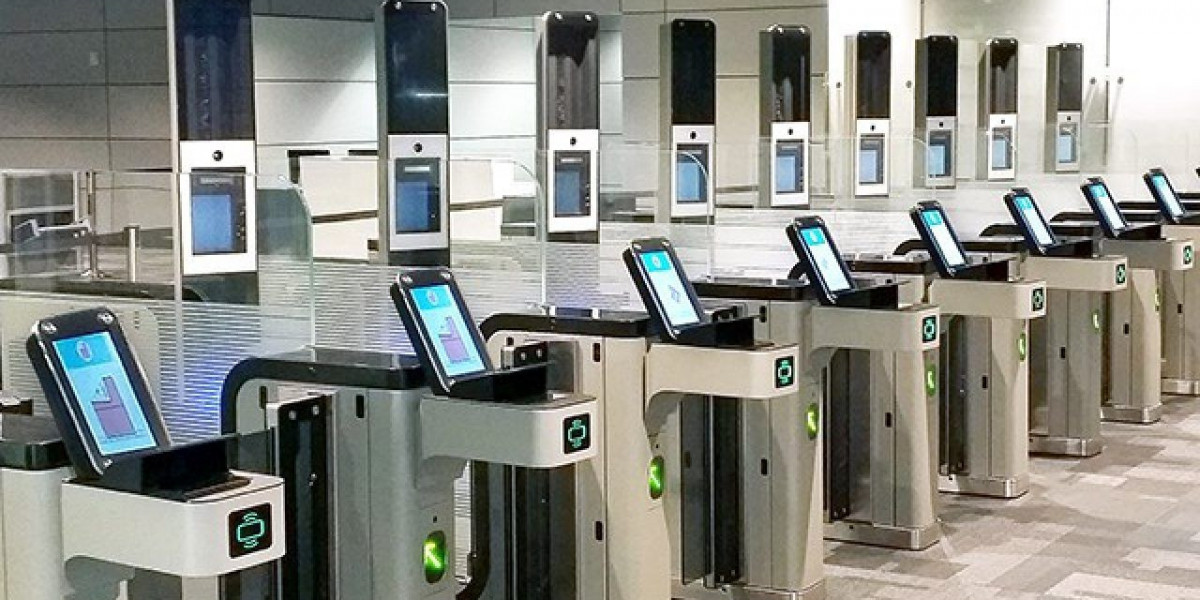The automated border control market has been revolutionized by the integration of advanced biometric technologies, particularly facial recognition. As international travel grows and security demands become more stringent, governments and border agencies worldwide are increasingly adopting biometric-based ABC systems to enhance both security and passenger convenience. This article explores the critical role that facial recognition and other biometric modalities play in shaping the automated border control market.
Why Biometrics Matter in Automated Border Control
Biometric technologies use unique physical or behavioral characteristics to verify an individual's identity. Unlike traditional identity verification methods based on documents or passwords, biometrics provide a higher level of accuracy and security, making them ideal for border control applications.
Among biometrics, facial recognition has emerged as the most prominent technology in ABC systems due to its non-intrusive nature and rapid processing capabilities. Other modalities such as fingerprint and iris recognition complement facial recognition to improve accuracy and reliability.
Facial Recognition: The Cornerstone of ABC Systems
Key Advantages
Contactless and Fast: Facial recognition allows for quick, touchless identification, an essential feature in high-traffic border points and especially relevant in the post-pandemic era.
High Accuracy and Security: Modern facial recognition algorithms can match faces against databases with remarkable precision, even under varying lighting or angle conditions.
Seamless Integration: Facial recognition can be integrated with existing security infrastructure, including surveillance cameras and biometric kiosks, providing a unified security approach.
User-Friendly Experience: Passengers simply walk through e-gates or kiosks where cameras capture their facial data, significantly reducing wait times and improving flow.
Complementary Biometrics in ABC
While facial recognition leads, other biometric technologies are often deployed to enhance identity verification:
Fingerprint Recognition: Often used as a secondary check, fingerprints provide a high level of uniqueness and are widely accepted internationally.
Iris Scanning: Iris recognition offers exceptional accuracy and is particularly useful in high-security environments.
Multimodal Biometrics: Combining two or more biometric types increases fraud resistance and reduces false acceptance rates.
Market Drivers Fueled by Biometrics
The adoption of facial recognition and biometrics in automated border control is driven by several factors:
Increasing Security Threats: Enhanced biometrics reduce risks of identity fraud, illegal immigration, and terrorism by providing reliable identity verification.
Government Mandates: Many countries have enacted policies requiring biometric screening for travelers, pushing investments in ABC solutions.
Technological Advances: AI and machine learning improve facial recognition accuracy, enabling wider adoption.
Passenger Experience Demand: Airports and border points aim to offer faster, more convenient processing to meet traveler expectations.
Challenges in Implementation
Despite its benefits, the deployment of facial recognition and biometric ABC systems faces challenges:
Privacy Concerns: Collecting and storing biometric data raises data protection and privacy issues, necessitating compliance with regulations like GDPR.
Ethical Considerations: Ensuring unbiased facial recognition algorithms that work equally well across diverse demographics is critical.
Infrastructure Investment: High initial costs and the need for reliable IT infrastructure can be barriers, particularly in developing regions.
Integration with Legacy Systems: Compatibility with existing border control technology requires careful planning.
Future Trends in Biometrics for ABC
AI-Enhanced Recognition: Continuous improvement in AI algorithms will make facial recognition faster and more accurate, even in crowded or challenging environments.
Mobile Biometrics: Integration with smartphones and traveler apps may enable pre-verification, speeding up border processing.
Blockchain for Identity Management: Emerging solutions use blockchain to secure biometric data and enhance trust.
Global Interoperability: Efforts to standardize biometric data exchange between countries will facilitate smoother cross-border travel.
Key Market Players
Leading companies in the ABC market are at the forefront of facial recognition and biometric innovation, including Thales Group, IDEMIA, NEC Corporation, and SITA. These firms offer end-to-end solutions combining hardware, software, and AI-driven analytics tailored for border security.
Conclusion
Facial recognition and biometric technologies are central to the evolution of the automated border control market. They provide a powerful blend of enhanced security, operational efficiency, and improved traveler experience. As technology advances and adoption grows globally, biometrics will continue to drive the transformation of border management systems, making international travel safer and more seamless.









